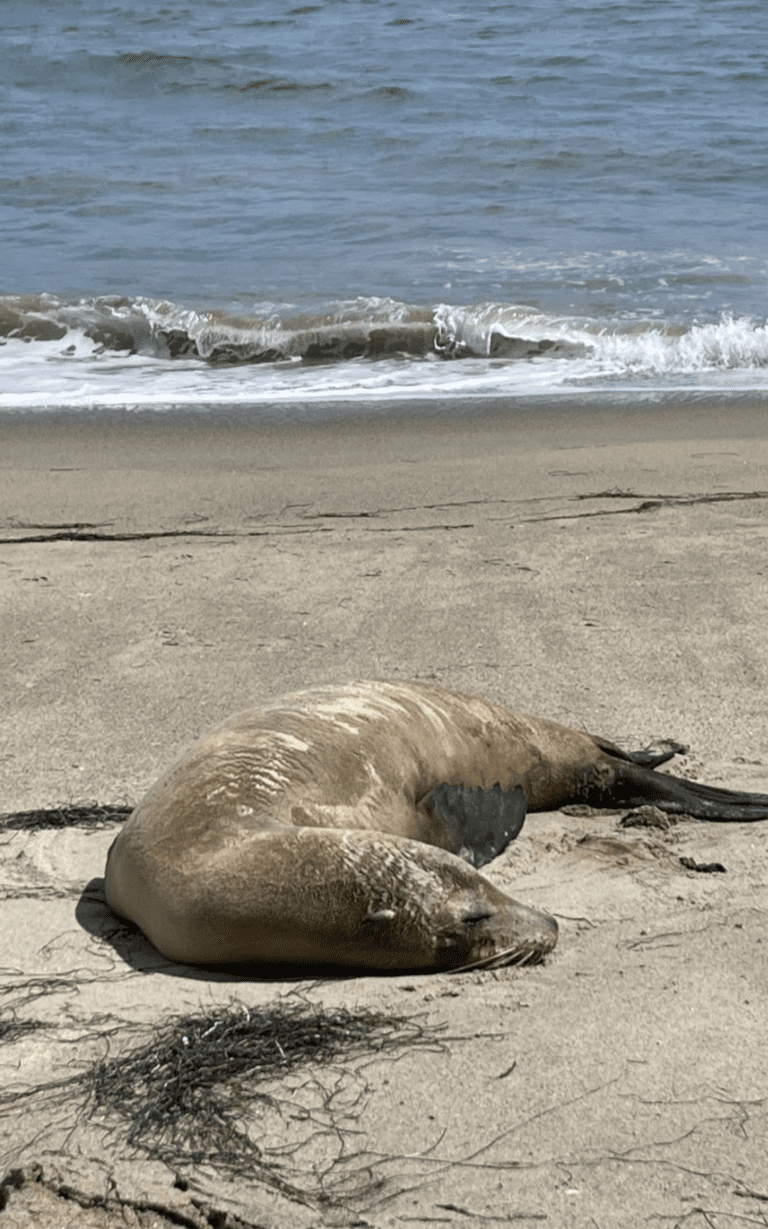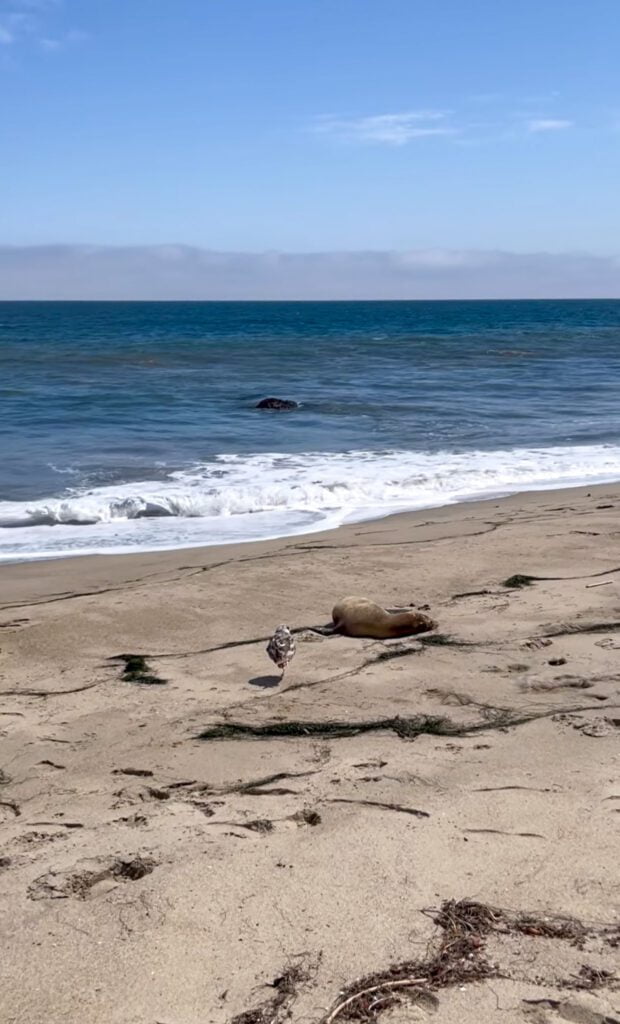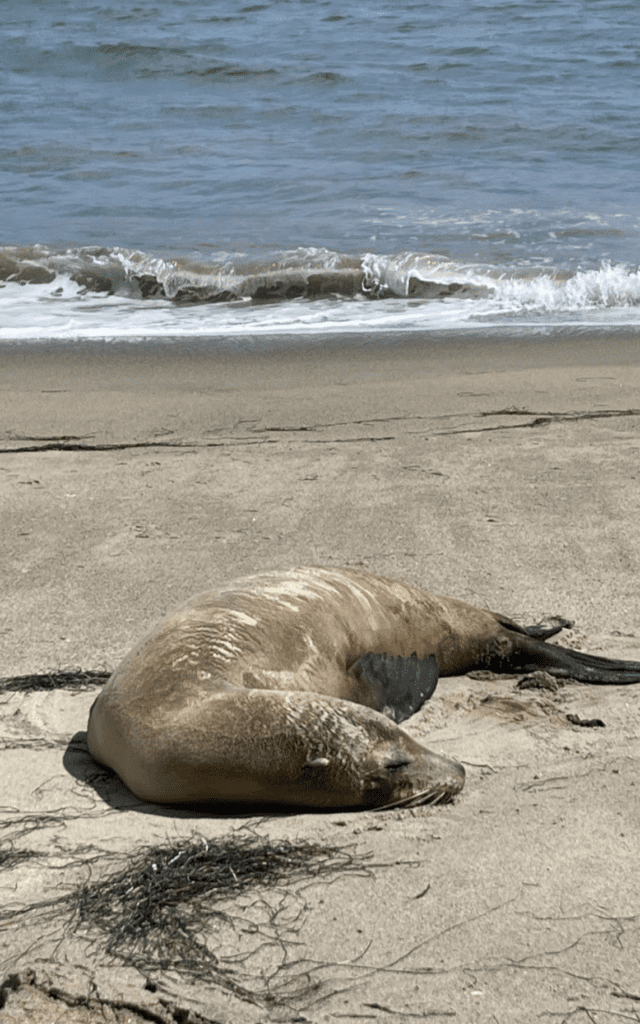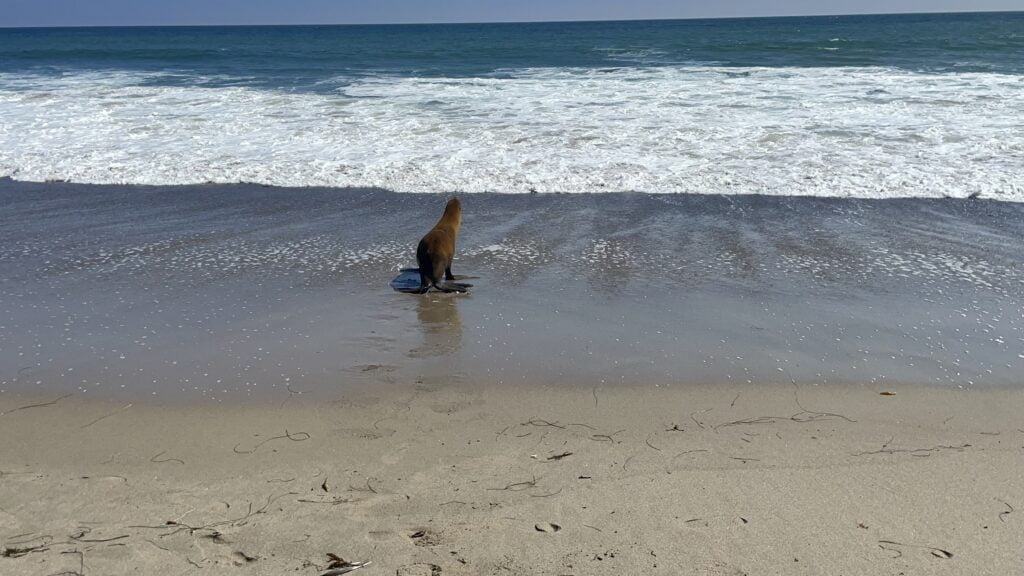
The California Wildlife Center urges beachgoers to stay away from poised sea lions as they can express aggressive behavior
Last month, numerous sick and dead sea lions and dolphins have been washing up along the Southern California coast. Health officals say they have likely been poisoned by domoic acid, a neurotoxin produced by large algae blooms.
“Although you may want to help, the best and safest way to assist is to stay away and report the sick animal immediately,” Department of Animal Care and Control Director Marcia Mayeda said in a press release on June 30.
The Marine Mammal Care Center said symptoms of domoic acid poisoning in sea lions also include unusual side-to-side head movements and holding their head extended for fixed periods of time.
On July 4, the California Wildlife Center received a call of a distressed seal at Dan Blocker Beach. The seal was having a seizure and unfortunately died shortly after.
“While we have had many successful rescues since the DA event began, unfortunately, this was not one of them,” California Wildlife Center Executive Director Jennifer Brent said. “When we arrived, the California sea lion was having a seizure and she died shortly after.”


Brent said that due to the location of the beach and lack of sufficient access, they were not able to remove her from the beach. They were able to take samples from her body to submit for study.
“The next day was a very high tide, and she has likely entered the circle of life back into the ocean,” she said.
The center has been receiving more than 150 calls a day about California sea lions in distress and more likely suffering from domoic acid poisoning. Sea lions affected by domoic acid can experience dehydration, seizures and even death if left untreated.
Marine Program Manager Heather Henderson said that although they were unable to save that sea lion that washed up on Don Blocker Beach, they were able to rescue and treat a female sea lion from Topanga South Beach. The sea lion was in care for 13 days.
“Upon arrival to the beach, she had been violently tossed in the rough surf while seizing, just out of safe reach from our rescue team,” Henderson said. “We stayed on-site monitoring the scene for about 30 minutes before she rolled momentarily onto the sand.”
Henderson said she weighed in at 82 kg, or 180 lbs., and when they released her back in the ocean, she weighed 88 kg, or 194 lbs.
“With little fanfare, this beautiful, robust adult entered the ocean and swam out of our view,” Henderson said.
“The adult female California sea lion continued to seize until we had her safely in our care and could administer anti-convulsant medication,” Henderson said. “For three days she was comatose. Supportive care was provided, including fluid therapy and management of her seizures. On day four, she lifted her head and began to scratch (a normal sea lion behavior). Within the week we felt comfortable offering her solid food, which was well received. The sea lion was kept for an additional week to monitor for regression and to add bulk to her body.”
Henderson said they are currently stabilizing eight adult female California sea lions that were admitted displaying signs of Domoic Acid toxicity. Seven are no longer seizing, with two beginning to eat whole fish again. All of the adults in care displayed varying levels of seizing activity upon rescue, with some also in gravely poor body condition.
“Each of these rescues took a group effort beginning with the caring members of the public taking the time to report, then giving the animal space to rest until a rescue could be performed,” Henderson said. ” And, of course, the tireless efforts of our amazing team of volunteers that help support our staff in every aspect of the response effort.”
Though marine wildlife experts warn beachgoers to be cautious, they stress that they can express aggressive behavior. Experts don’t recommend touching, picking up, feeding, or pouring water on the animal, as they can easily cause harm, and are easily stressed by humans. Seals and sea lions temporarily “haul-out” on land to rest. Harbor seal mothers often leave their pups ashore while they’re feeding at sea. A beached whale, dolphin, or porpoise should be reported immediately.
Contact the Marine Mammal Response Team and provide them with as much information as possible if you see a sea lion in need of help, call (310) 458-9453.
